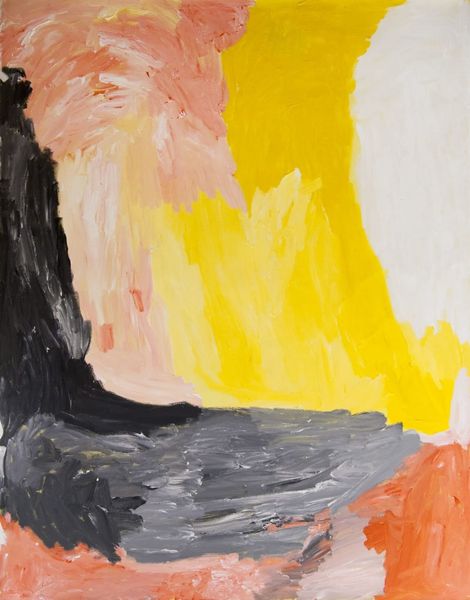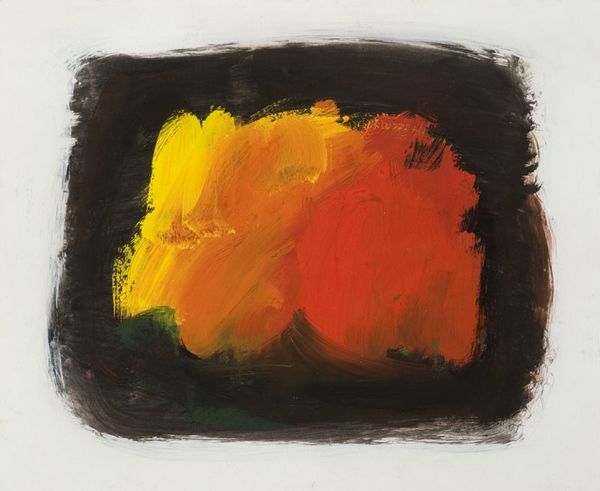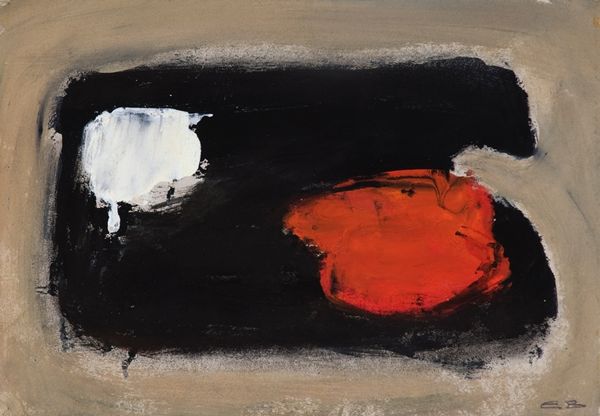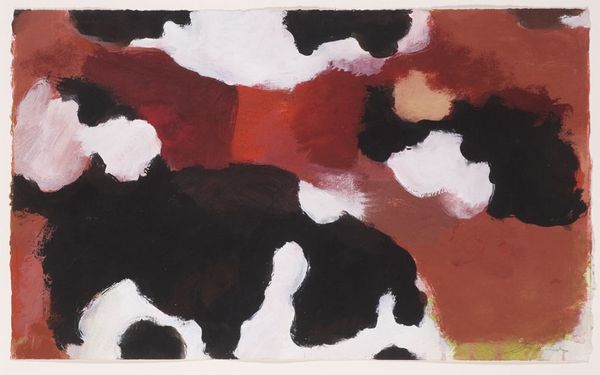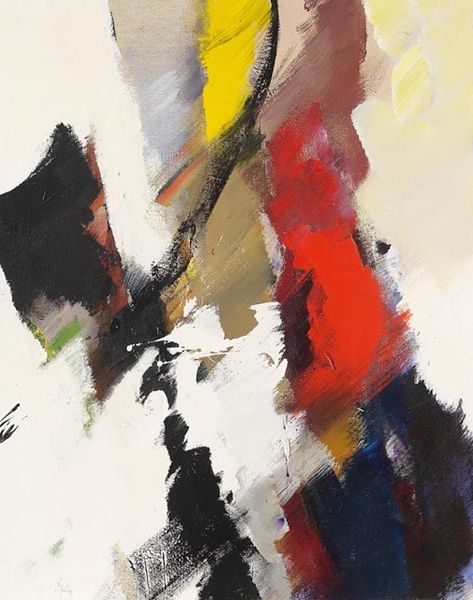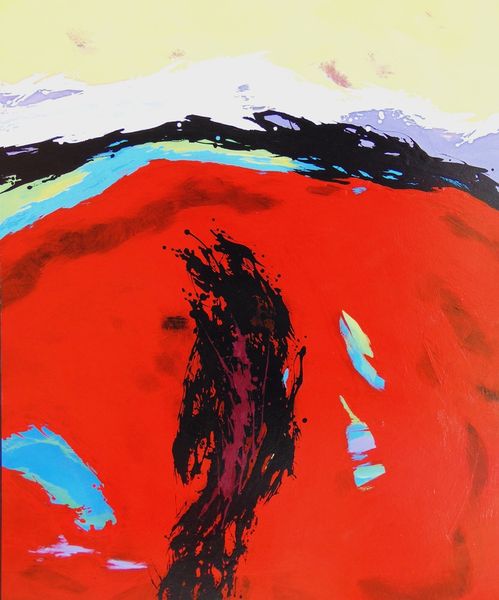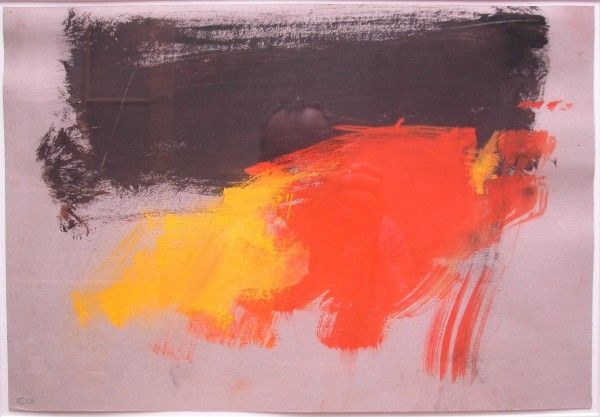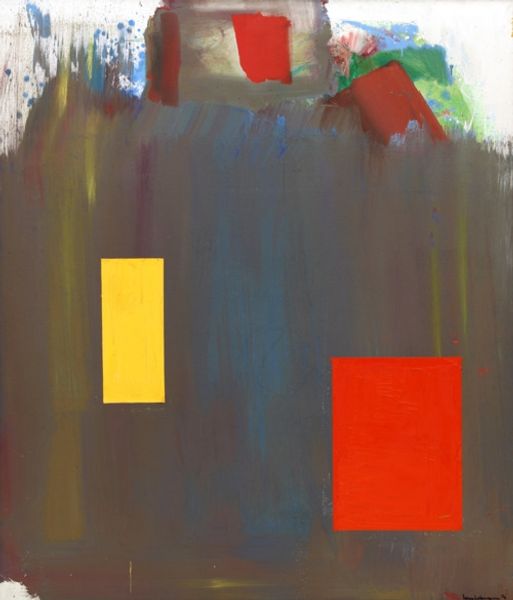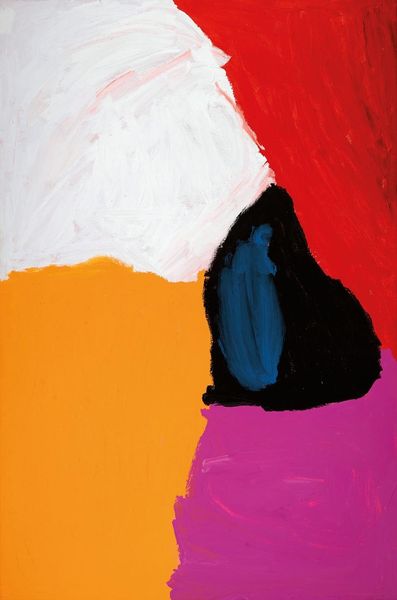
#
abstract expressionism
#
abstract painting
#
possibly oil pastel
#
oil painting
#
fluid art
#
neo expressionist
#
acrylic on canvas
#
underpainting
#
animal drawing portrait
#
expressionist
Copyright: Eugene Brands,Fair Use
Editor: Eugene Brands created *Avondval* in 1982, apparently using oils. I'm struck by the contrast – the dark mass at the bottom versus the lighter, almost airy top section. What stands out to you? Curator: I’m immediately drawn to the materiality of the piece. Notice how the heavy application of paint, especially in the lower register, creates a real sense of weight and groundedness, compared to the more translucent and layered application above. What do you make of this distinction in process? Editor: It makes me think about the title, "Avondval," which I believe means nightfall. It’s as if the darkness is physically encroaching upon the light, which you can see in the tangible layering of paint. Is there something about Brands' process that is particularly important in understanding his work? Curator: Absolutely. Brands was affiliated with the CoBrA group, and they were interested in spontaneous, almost primal mark-making. His materials—the thickly applied oils—were a tool to tap into a raw and immediate form of expression, challenging academic notions of artistic skill. Consider how the crude application of the medium serves to communicate the themes being explored. Editor: So, it’s not just about what’s depicted but how it’s made. Did the availability of materials after the war also contribute to this emphasis on the physical properties of paint? Curator: That's a crucial observation. Post-war scarcity likely played a role. However, it’s also important to see this materiality as a deliberate aesthetic choice. It reflects a broader artistic trend where the physical act of painting becomes as significant as the subject matter itself, undermining a traditional hierarchy of the image over the means of its making. Editor: I never thought about the materials speaking quite this loudly before. Thanks for highlighting that perspective! Curator: Indeed. Shifting our focus to the labor inherent in artistic production, and understanding the circumstances behind those decisions, gives us richer and more grounded insights.
Comments
No comments
Be the first to comment and join the conversation on the ultimate creative platform.

